Chilean Needle Grass (RPMP 2018)
Chilean Needle Grass (Nassella Neesiana)
Note: each of the images on this page links to a larger, more detailed version of that image in order to help you identify this pest plant.
Chilean Needle Grass (CNG) is an erect, tufted perennial tussock that can grow up to 1m in height when left ungrazed. It produces seeds from three points on the plant: the panicle seed, mid-stem seed at leaf joins and at the base of the plant. Panicle seed is the most obvious and is usually present November-January and, when conditions are suitable, March-May.
It is subject to a Sustained Control programme as part of the Regional Pest Management Plan 2018. The long term goal is to ensure the infestations are maintained at levels, or reduced to levels, not causing escalating impacts. The programme also have a strong aim of minimising the risk of spread that can create new infestations in affected areas.
What Are The Council Regulations For The Control Of This Plant and Risks of Spreading It?
There are legal obligations under the Regional Pest Management Plan 2018 for both occupiers of property with a CNG infestation, and others for people in general.
Council can work with occupiers to develop and agree on a Management Plan for their property. This can also include assistance toward the control of CNG via Council-funded works or other assistance.
See the RPMP Programme for Chilean Needle Grass for Details of the Rules:
How Does The Council Help With CNG?
The Biosecurity Team delivers an annual programme of property inspections, control works, and overseeing a number of specialist contractors.
In addition:
- Council contracts Armourguard, as approved persons, to inspect machinery that has been cleaned before moving off affected areas of properties. Ph: 03 577 8055 for an Armourguard inspection.
- All enquires of potential new sites are visited as quickly as possible and if confirmed to be CNG, Council will work with the occupier to commence management as soon as possible and put in place longer term Management Plan.
- Council is keen to see any reduction of CNG on properties and minimising/eliminating the spread risk associated with CNG. If you are unsure whether you have the plant or unsure how best to control it, we will come out and discuss it with you.
- If you belong to a group that would like to know more on what CNG looks like/control methods/spread risks, we provide an education/awareness programme and will come out and talk to any interested group.
- The Council is also offering on-farm biosecurity signs for your property to help in minimising spread risks, contact the Biosecurity team if you are interested.
- Council is a stakeholder in a community-led project (Chilean Needle Grass Action Group) with the vision of eradicating CNG from Marlborough. We provide advice from the Council perspective and some funding to the group.
See how this programme is tracking
Why Is It A Pest?
- Chilean Needle Grass is an invasive weed that is able to out-compete productive pasture grasses and take over large areas if left, particularly in dry environments such as South Marlborough.
- It is unpalatable to stock when the panicle seed is present (November-January and March-May).
- The panicle seed attaches easily to stock, particularly sheep wool, and is able to dig through the pelt and muscle, downgrading pelts and meat as well as wool for export.
- The seed is also able to penetrate eyes of lambs causing blindness and sometimes even death.
Note: each of the images on this page links to a larger, more detailed version of that image in order to help you identify this pest plant.
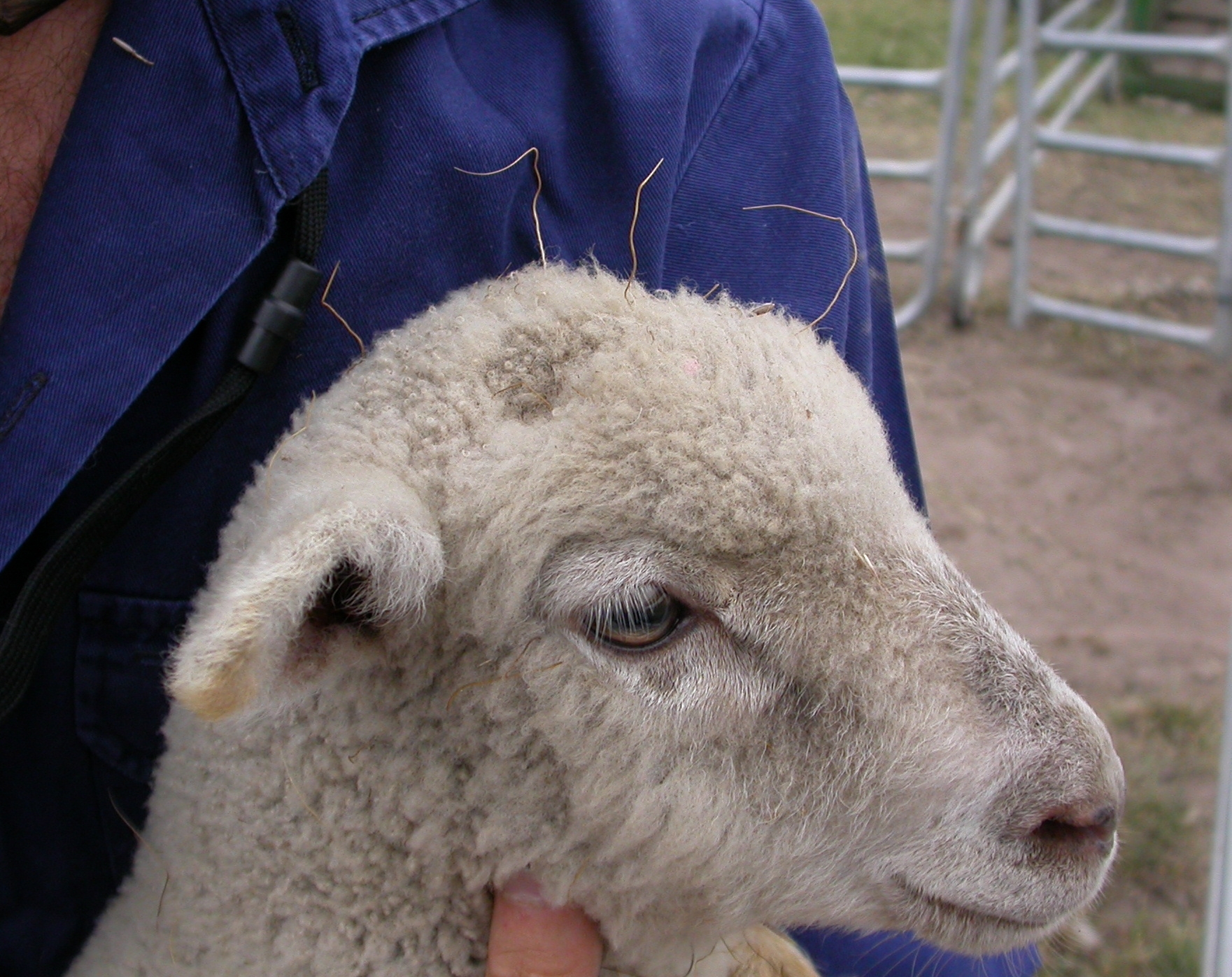
You can see the tail of the CNG seed attached to the lamb head
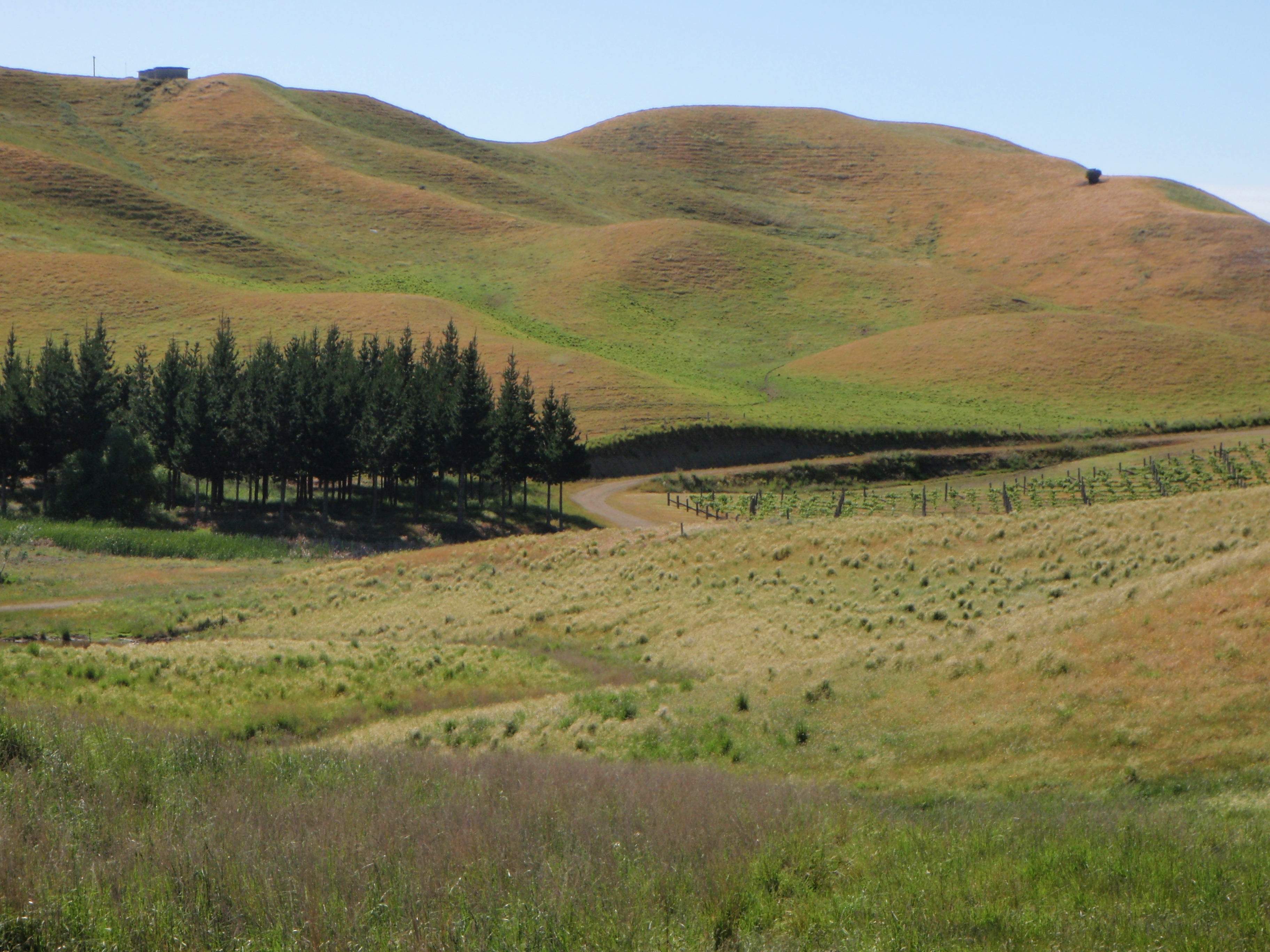
If not controlled, CNG will spread to cover large areas
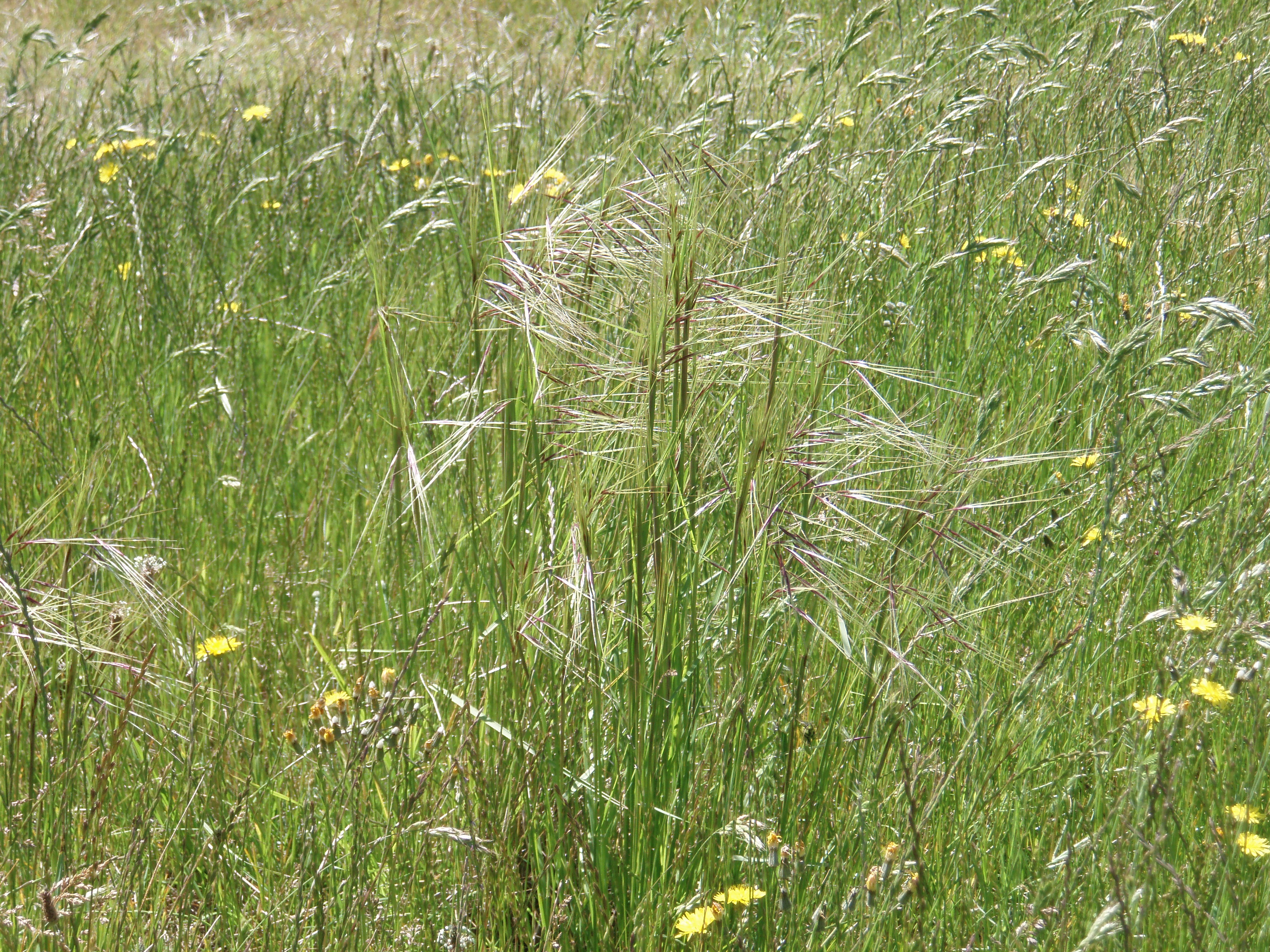
A large seeding CNG plant
Where Is It Found?
CNG is found in Hawkes Bay, North Canterbury as well as Marlborough. The main area in Marlborough is Blind River/Grassmere just south of Seddon, but there are patches of CNG found throughout Marlborough. See the map below of CNG distribution using the Council Smart Map system. Be aware the areas on the map are not all inclusive'; there are likely to be CNG areas that are not yet known to the Council, and areas indicated on the map show no specification of the extent of the CNG infestation, just that CNG has been found there.
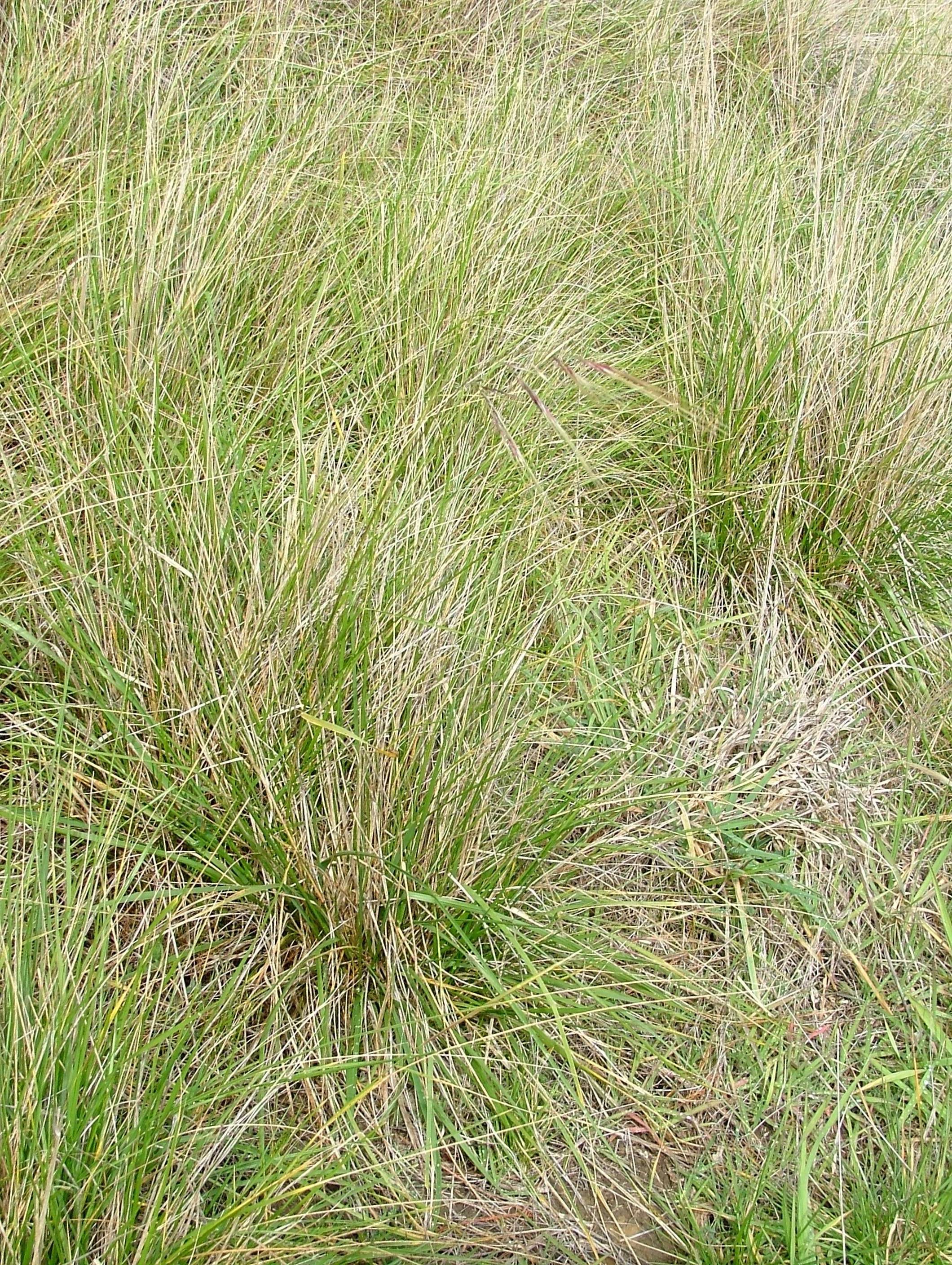
Large non-seeding CNG plants
Go to the Smart Map of recorded Chilean needle grass distribution
How Do I Identify It?
CNG is very difficult to identify when it is not seeding. It can look very similar to other pasture species although generally has a thinner more pointy leaf - more of a tussock look than grass. The root system is bulbous, similar to Nassella Tussock.
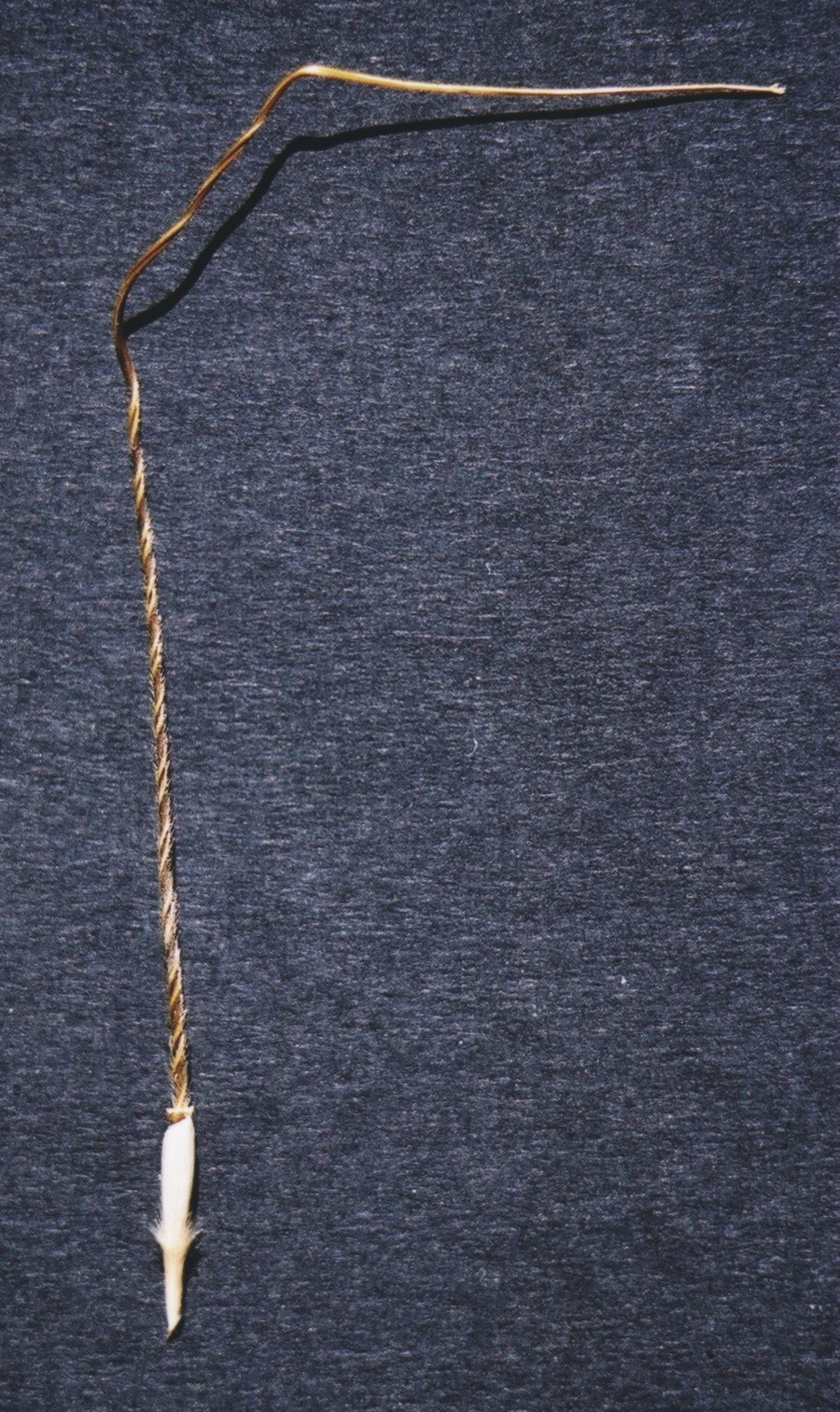
A CNG seed close up, note the feathery sharp tip, collar at the base of the seedhead and the twisted tail.
The panicle seeds can be identified by the sharp feathery tip, a collar at the base of the seedhead called a corona and a long twisted tail (awn).
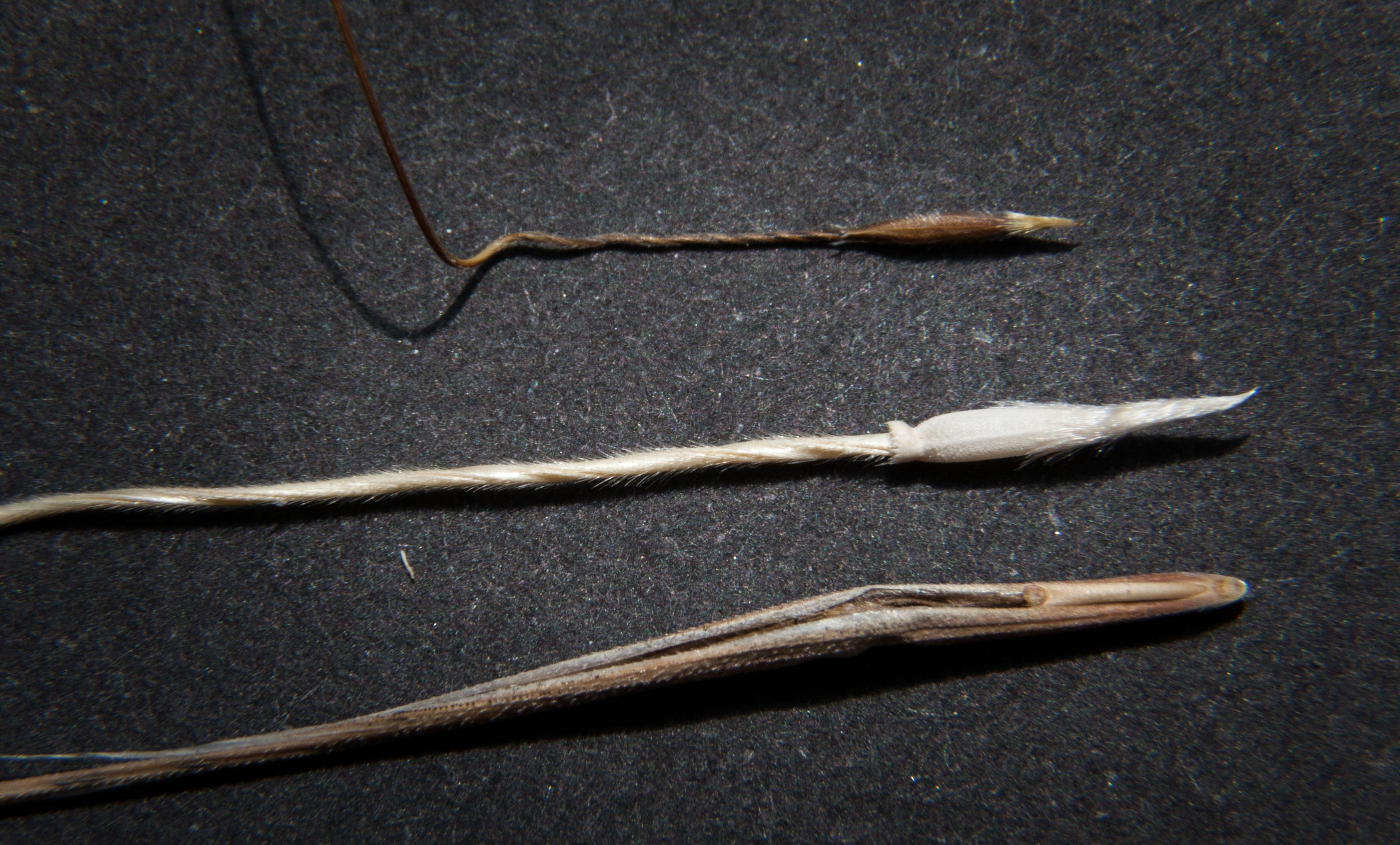
Two other seeds that can look similar, from top to bottom are common needle grass, CNG and Brome grass. Note the size difference of CNG seed compared with common needle grass, and the presence of the seedhead collar on CNG seed and its absence in the other two.
YouTube Video - Chilean Needle Grass
Below is a video to help with identification. If you are still unsure if you have the plant, take a picture of the plant and send it to CNG@marlborough.govt.nz or ring the Biosecurity team on Ph: 03 520 7400.
How Is It Spread?
The seed is heavy and will generally fall close to the parent plant, building up a large amount of seed in the soil around the existing plants. The seed is very sharp and spreads by attaching itself to anything that brushes past the plant. Therefore CNG seed is spread predominantly through stock, people, vehicles and machinery. Stock feed such as hay is also how seed can be spread to new areas.
Earthmoving machinery is a high spread risk due to the seed remaining viable in the soil for 12+ years, therefore dirty earthmoving machinery can carry contaminated soil.
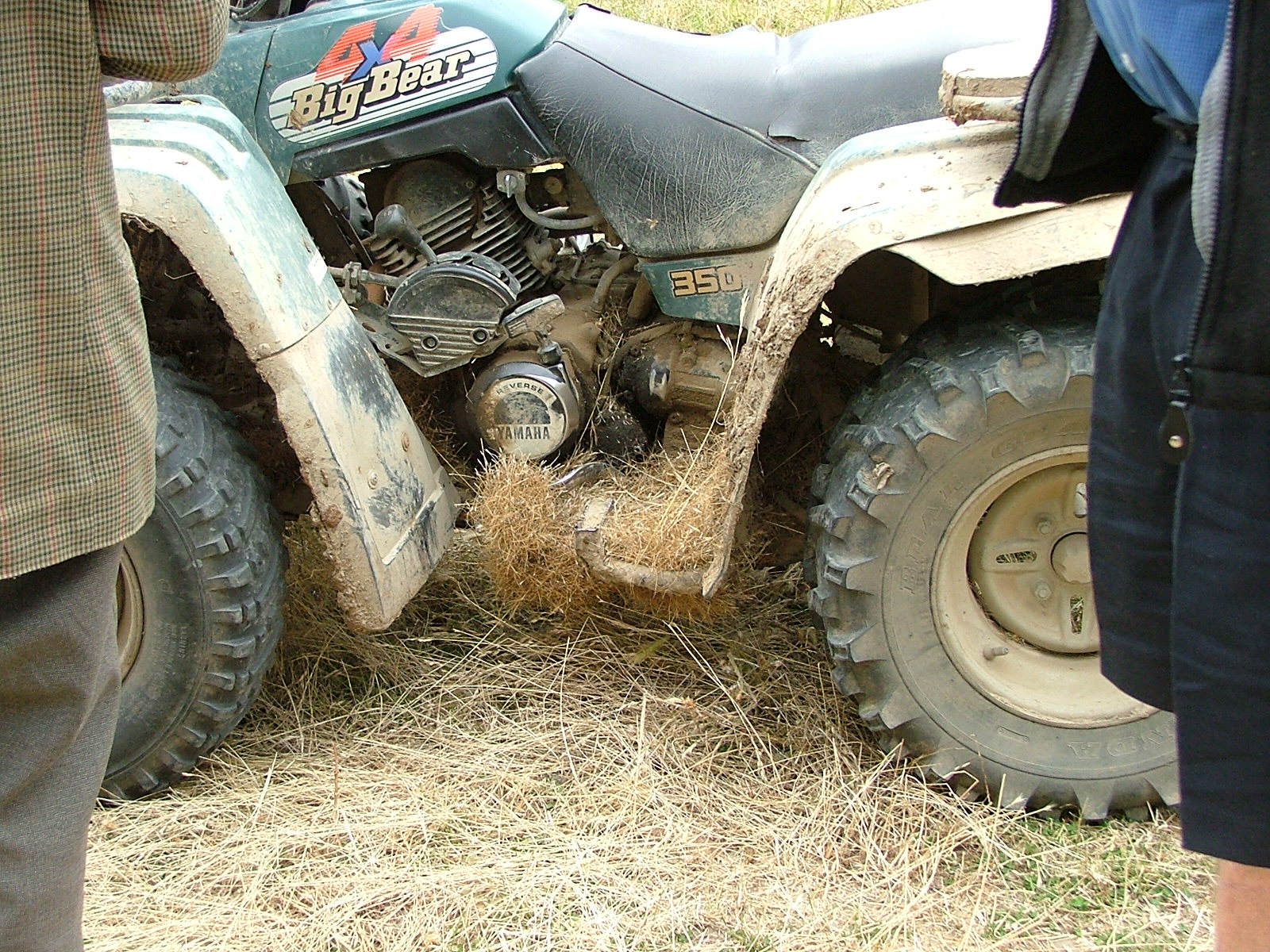
CNG can get attached to any vehicle and spread easily to new areas

CNG seed attached to a shirt
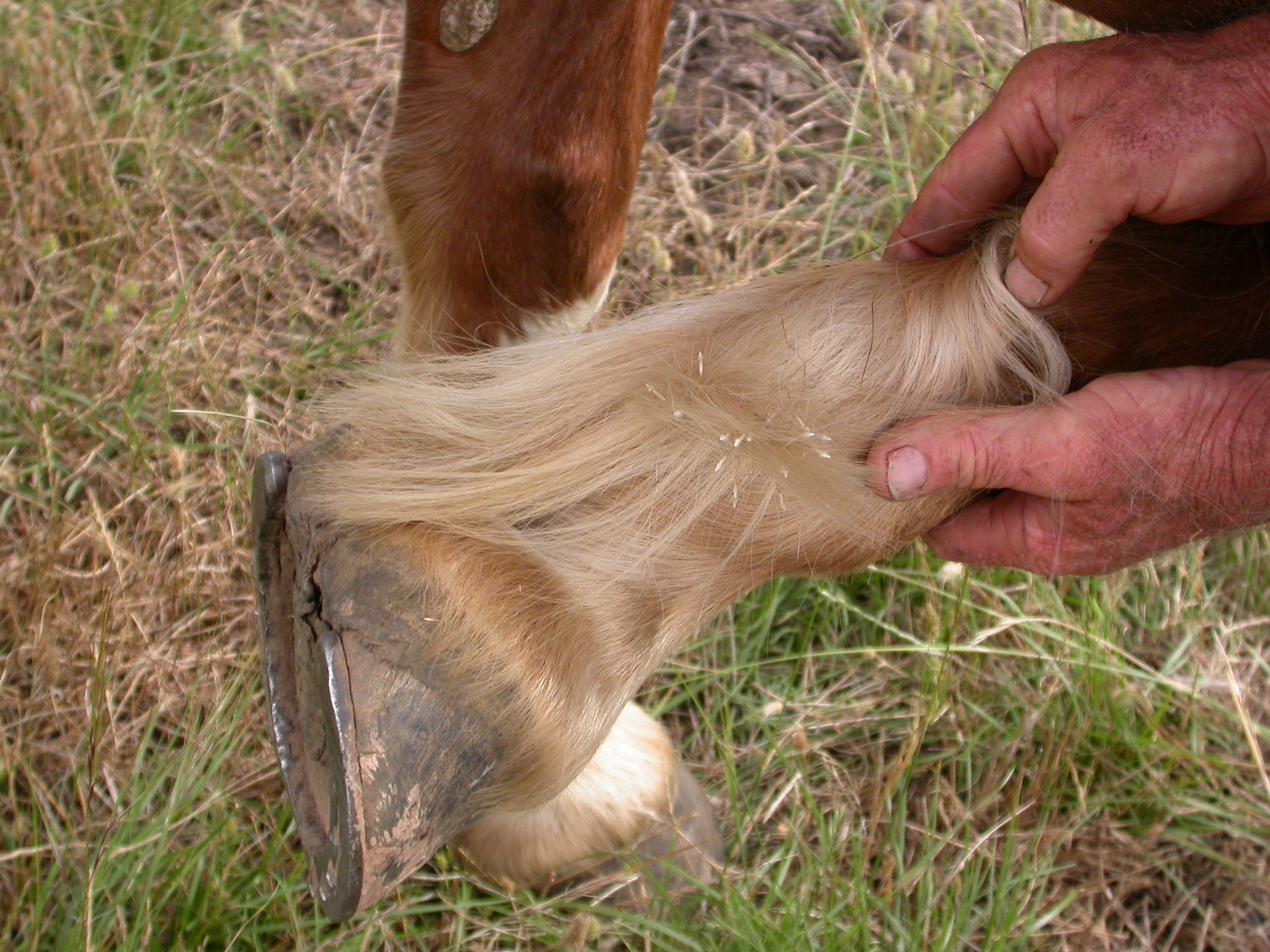
CNG seed can attach to any animal including mud in hooves
How Can It Be Controlled?
- CNG has been in Marlborough since the 1970s. Prior to 2011, CNG was near impossible to control, which is the reason it has been able to spread to the large area it is in now.
- If using Taskforce please read the label carefully as it is a technical herbicide and must be applied correctly, and there are stock withholding periods.
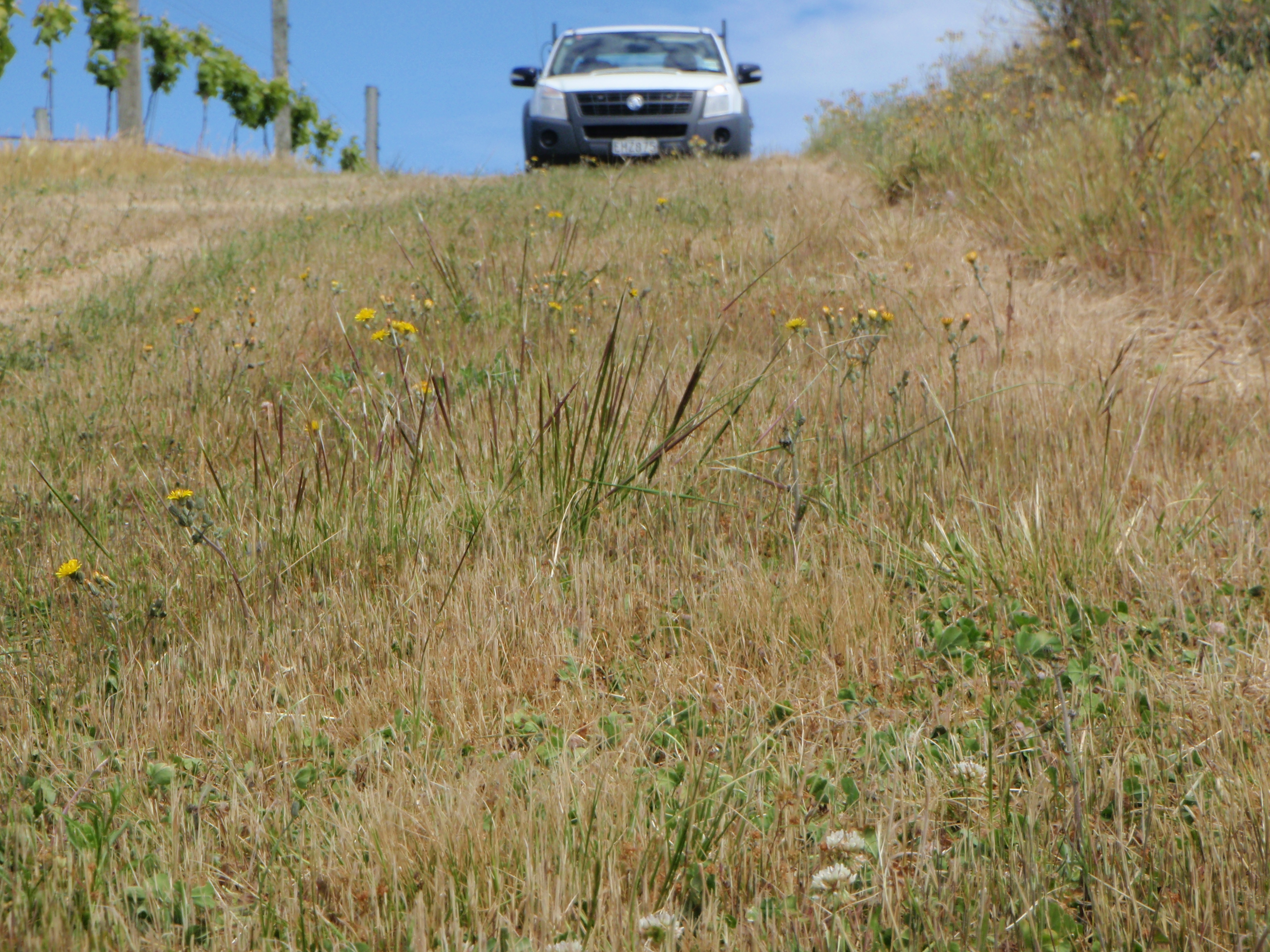
Where mowing is common CNG plants will modify the panicle seedheads and still produce seed
- All broad acre application of Taskforce should be followed up with an improved pasture regime otherwise there is likely to be an increase in broadleaf weeds and thistles on the sprayed site.
- Glyphosphate can be added with Taskforce to give an immediate knockdown of seeding plants and Taskforce will provide a residue to keep CNG seeds in the ground from germinating.
- Grubbing is not effective as the disturbance of the soil allows more seeds to germinate and grow back quickly.
- Mowing is not an effective control method as with continued mowing the plant will modify its growth to produce stunted panicle seeds below the mowing height. Also the plant is still producing seeds mid-stem and from the base to enable its spread. Mowing should not be used when CNG is seeding as there is an increased risk of spreading the plant further through the mowing activity.
How Can I Stop It Spreading If I Already Have CNG?
- It is a legal offence to knowingly spread CNG therefore if you have CNG on your property you must take all precautions to minimise any spread from your property.
- Fence CNG areas off to stock and vehicles over the seeding period or ensure that CNG areas are not entered into. If stock must enter seeding areas they should not be sold at sales but go straight to slaughter.
- Hay or other stockfeed containing CNG should not move off the property. Agricultural contractors need to be told of the spread risk of CNG so they can initiate appropriate vehicle hygiene protocols.
- No stock and vehicles used in CNG areas should move off the property over the seeding period and in times of muddy conditions.
- If spot spraying you can add Glyphosphate with the Taskforce, Glyphosphate will kill the plant to eliminate seeding for the current season and the Taskforce will leave residue in the soil to stop any further seeds from germinating.
- Even the most experienced eye for the plant can miss individual plants so always keep a clean vehicle or have a specific vehicle that is used on the farm only.
- Check your clothes, dogs and vehicles regularly for the seed and destroy the seed if found.
- Inform people coming on to your property about the risk of CNG spread and make sure they stick to formed roads and tracks and park up in designated areas.
- If you have a washdown facility ensure they use it before leaving the property.
- To minimise the spread risk you can apply Taskforce on the sides of major thoroughfares and park up areas on your property.

Signage is a good way for you to make people aware of pest plant spread risks, both in to and out of your property. Contact the Council if you would like one of these signs for your property.
How Do I Stop CNG From Coming to My Property?
- Know how the plant can be spread and take precautions to ensure minimal vehicle and stock movement on your property
- Have washdown facilities available to clean vehicles before entering your property.
- Do not buy stock or hay from known CNG properties and do not send your stock to CNG vineyards for grazing that are going to be returned to your property - it is not worth the risk.
- Ensure you know what the plant looks like and search your property for it - found and controlled early is the best chance we have of eliminating it on your property.
- For further advice, see our on-farm biosecurity page. There are on-farm biosecurity signs available for your farm; if you are interested these are available free from the Council.
Managing CNG in Vineyards
New Zealand Winegrowers have developed and excellent resource for those in the viticulture industry specifically relating to CNG management.

